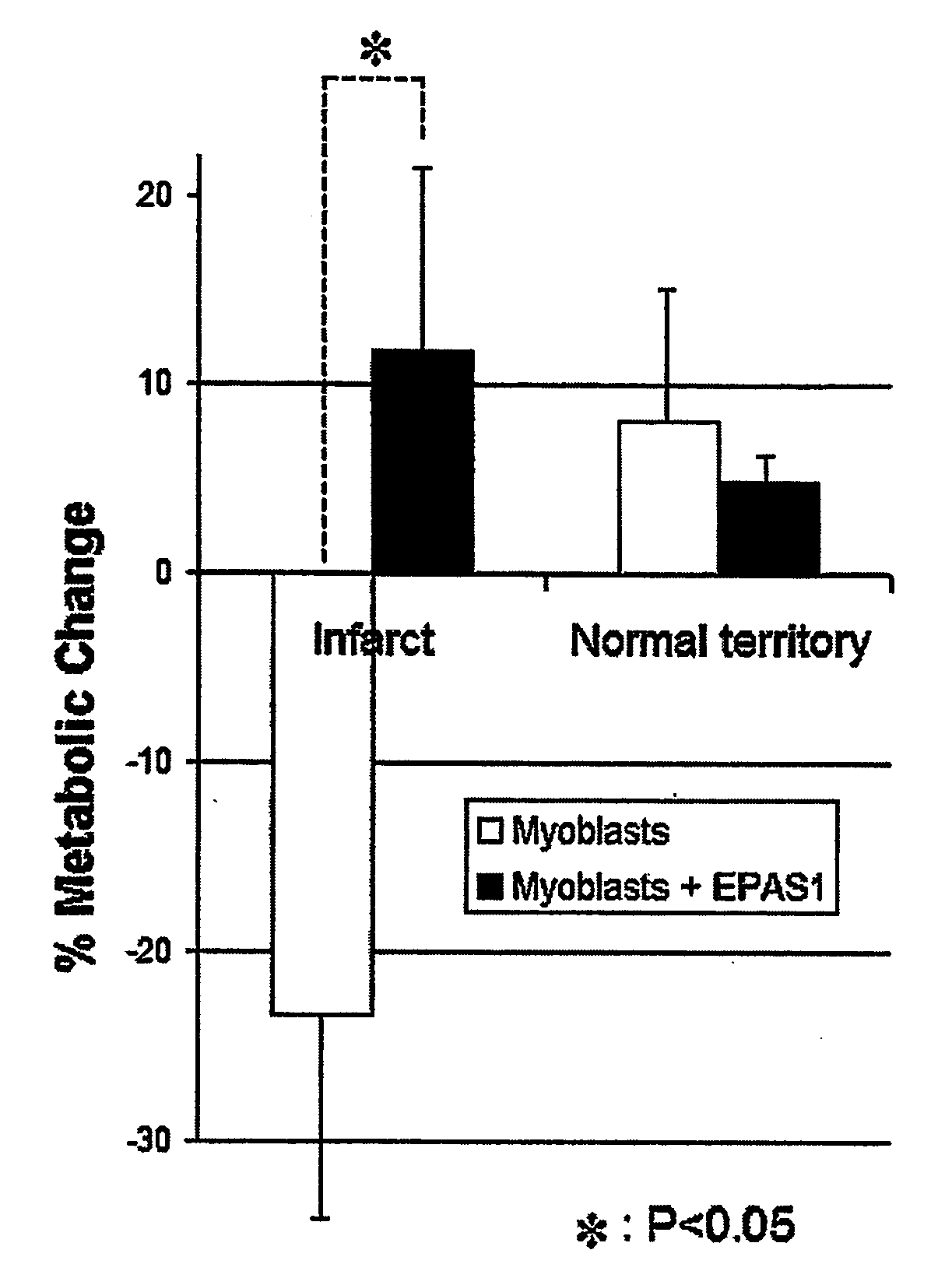Epas1 Gene Transfer to Improve Cell Therapy
a cell therapy and epas1 technology, applied in the field of improving cell implantation and cardiac function, can solve the problems of increasing the cost of treatment, increasing the risk of death, and increasing the risk of death, and achieve the effect of stimulating cell survival
- Summary
- Abstract
- Description
- Claims
- Application Information
AI Technical Summary
Benefits of technology
Problems solved by technology
Method used
Image
Examples
example 1
Use of EPAS1 to Induce Angiogenesis
1) Materiel and Methods
Adenovirus Production
[0037] EPAS1 / pcDNA3 plasmid was kindly provided by S. L. McKnight(3) and was used to produce adenoviral vectors with the Ad.Easy™ technology using manufacturer methodology (Q-Biogene).
Infection
[0038] Early passage human (Clonetics) or rat myoblasts were plated in 100 mm dishes and grown until they reached ˜70% confluence. Cells were rinsed with PBS and covered with 4 ml DMEM with 10% fetal calf serum (FCS) and adenoviruses at a MOI of 500. Cells were incubated at 37° C. with constant but gentle agitation for 6 hours. 6 ml of DMEM with 10% FCS was added and cells were incubated overnight at 37° C.
[0039] Total RNA was isolated from human myoblasts (Clonetics) infected with either Ad.Null™ (Q-Biogene) or Ad.EPAS1 as described(7). Probes were prepared and hybridized to Atlas Human 1.2 Array (Clontech) and to 8K Human Atlas Array (Clontech) according to the manufacturer's inst...
PUM
| Property | Measurement | Unit |
|---|---|---|
| nucleic acid sequence | aaaaa | aaaaa |
| nucleic acid | aaaaa | aaaaa |
| MI | aaaaa | aaaaa |
Abstract
Description
Claims
Application Information
 Login to View More
Login to View More - R&D
- Intellectual Property
- Life Sciences
- Materials
- Tech Scout
- Unparalleled Data Quality
- Higher Quality Content
- 60% Fewer Hallucinations
Browse by: Latest US Patents, China's latest patents, Technical Efficacy Thesaurus, Application Domain, Technology Topic, Popular Technical Reports.
© 2025 PatSnap. All rights reserved.Legal|Privacy policy|Modern Slavery Act Transparency Statement|Sitemap|About US| Contact US: help@patsnap.com


